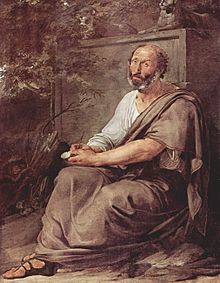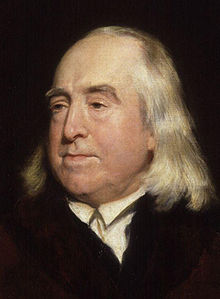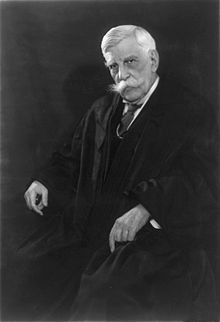Posthumanism or post-humanism (meaning "after humanism" or "beyond humanism") is a term with at least seven definitions according to philosopher Francesca Ferrando:
- Antihumanism: any theory that is critical of traditional humanism and traditional ideas about humanity and the human condition.
- Cultural posthumanism: a branch of cultural theory critical of the foundational assumptions of humanism and its legacy that examines and questions the historical notions of "human" and "human nature", often challenging typical notions of human subjectivity and embodiment and strives to move beyond archaic concepts of "human nature" to develop ones which constantly adapt to contemporary technoscientific knowledge.
- Philosophical posthumanism: a philosophical direction which draws on cultural posthumanism, the philosophical strand examines the ethical implications of expanding the circle of moral concern and extending subjectivities beyond the human species
- Posthuman condition: the deconstruction of the human condition by critical theorists.
- Transhumanism: an ideology and movement which seeks to develop and make available technologies that eliminate aging and greatly enhance human intellectual, physical, and psychological capacities, in order to achieve a "posthuman future".
- AI takeover: A more pessimistic alternative to transhumanism in which humans will not be enhanced, but rather eventually replaced by artificial intelligences. Some philosophers, including Nick Land, promote the view that humans should embrace and accept their eventual demise. This is related to the view of "cosmism" which supports the building of strong artificial intelligence even if it may entail the end of humanity as in their view it "would be a cosmic tragedy if humanity freezes evolution at the puny human level".
- Voluntary Human Extinction, which seeks a "posthuman future" that in this case is a future without humans.
Philosophical posthumanism
Philosopher Ted Schatzki suggests there are two varieties of posthumanism of the philosophical kind:
One, which he calls 'objectivism', tries to counter the
overemphasis of the subjective or intersubjective that pervades
humanism, and emphasises the role of the nonhuman agents, whether they
be animals and plants, or computers or other things.
A second prioritizes practices, especially social practices, over
individuals (or individual subjects) which, they say, constitute the
individual.
There may be a third kind of posthumanism, propounded by the philosopher Herman Dooyeweerd.
Though he did not label it as 'posthumanism', he made an extensive and
penetrating immanent critique of Humanism, and then constructed a
philosophy that presupposed neither Humanist, nor Scholastic, nor Greek
thought but started with a different religious ground motive.
Dooyeweerd prioritized law and meaningfulness as that which enables
humanity and all else to exist, behave, live, occur, etc. "Meaning is the being of all that has been created," Dooyeweerd wrote, "and the nature even of our selfhood."
Both human and nonhuman alike function subject to a common 'law-side',
which is diverse, composed of a number of distinct law-spheres or aspects.
The temporal being of both human and non-human is multi-aspectual; for
example, both plants and humans are bodies, functioning in the biotic
aspect, and both computers and humans function in the formative and
lingual aspect, but humans function in the aesthetic, juridical, ethical
and faith aspects too. The Dooyeweerdian version is able to
incorporate and integrate both the objectivist version and the practices
version, because it allows nonhuman agents their own
subject-functioning in various aspects and places emphasis on aspectual
functioning.
Emergence of philosophical posthumanism
Ihab Hassan, theorist in the academic study of literature, has stated:
Humanism may be coming to an end as humanism transforms itself into something one must helplessly call posthumanism.
This view predates most currents of posthumanism which have developed
over the late 20th century in somewhat diverse, but complementary,
domains of thought and practice. For example, Hassan is a known scholar
whose theoretical writings expressly address postmodernity in society. Beyond postmodernist
studies, posthumanism has been developed and deployed by various
cultural theorists, often in reaction to problematic inherent
assumptions within humanistic and enlightenment thought.
Theorists who both complement and contrast Hassan include Michel Foucault, Judith Butler, cyberneticists such as Gregory Bateson, Warren McCullouch, Norbert Wiener, Bruno Latour, Cary Wolfe, Elaine Graham, N. Katherine Hayles, Benjamin H. Bratton, Donna Haraway, Peter Sloterdijk, Stefan Lorenz Sorgner, Evan Thompson, Francisco Varela, Humberto Maturana and Douglas Kellner. Among the theorists are philosophers, such as Robert Pepperell, who have written about a "posthuman condition", which is often substituted for the term "posthumanism".
Posthumanism differs from classical humanism by relegating humanity back to one of many natural species, thereby rejecting any claims founded on anthropocentric dominance. According to this claim, humans have no inherent rights to destroy nature or set themselves above it in ethical considerations a priori. Human knowledge is also reduced to a less controlling position, previously seen as the defining aspect of the world. Human rights exist on a spectrum with animal rights and posthuman rights. The limitations and fallibility of human intelligence are confessed, even though it does not imply abandoning the rational tradition of humanism.
Proponents of a posthuman discourse, suggest that innovative
advancements and emerging technologies have transcended the traditional
model of the human, as proposed by Descartes among others associated with philosophy of the Enlightenment period. In contrast to humanism,
the discourse of posthumanism seeks to redefine the boundaries
surrounding modern philosophical understanding of the human.
Posthumanism represents an evolution of thought beyond that of the
contemporary social boundaries and is predicated on the seeking of truth
within a postmodern context. In so doing, it rejects previous attempts to establish 'anthropological universals' that are imbued with anthropocentric assumptions.
The philosopher Michel Foucault placed posthumanism within a context that differentiated humanism from enlightenment thought.
According to Foucault, the two existed in a state of tension: as
humanism sought to establish norms while Enlightenment thought attempted
to transcend all that is material, including the boundaries that are
constructed by humanistic thought.
Drawing on the Enlightenment’s challenges to the boundaries of
humanism, posthumanism rejects the various assumptions of human dogmas
(anthropological, political, scientific) and takes the next step by
attempting to change the nature of thought about what it means to be
human. This requires not only decentering the human in multiple
discourses (evolutionary, ecological, technological) but also examining
those discourses to uncover inherent humanistic, anthropocentric,
normative notions of humanness and the concept of the human.
Contemporary posthuman discourse
Posthumanistic
discourse aims to open up spaces to examine what it means to be human
and critically question the concept of "the human" in light of current
cultural and historical contexts In her book How We Became Posthuman, N. Katherine Hayles,
writes about the struggle between different versions of the posthuman
as it continually co-evolves alongside intelligent machines. Such coevolution, according to some strands of the posthuman discourse, allows one to extend their subjective understandings of real experiences beyond the boundaries of embodied existence. According to Hayles's view of posthuman, often referred to as technological posthumanism, visual perception
and digital representations thus paradoxically become ever more
salient. Even as one seeks to extend knowledge by deconstructing
perceived boundaries, it is these same boundaries that make knowledge
acquisition possible. The use of technology in a contemporary society is
thought to complicate this relationship.
Hayles discusses the translation of human bodies into information (as suggested by Hans Moravec)
in order to illuminate how the boundaries of our embodied reality have
been compromised in the current age and how narrow definitions of
humanness no longer apply. Because of this, according to Hayles, posthumanism is characterized by a loss of subjectivity based on bodily boundaries.
This strand of posthumanism, including the changing notion of
subjectivity and the disruption of ideas concerning what it means to be
human, is often associated with Donna Haraway’s concept of the cyborg. However, Haraway has distanced herself from posthumanistic discourse due to other theorists’ use of the term to promote utopian views of technological innovation to extend the human biological capacity (even though these notions would more correctly fall into the realm of transhumanism).
While posthumanism is a broad and complex ideology, it has
relevant implications today and for the future. It attempts to redefine social structures without inherently humanly or even biological origins, but rather in terms of social and psychological systems where consciousness and communication could potentially exist as unique disembodied
entities. Questions subsequently emerge with respect to the current use
and the future of technology in shaping human existence, as do new concerns with regards to language, symbolism, subjectivity, phenomenology, ethics, justice and creativity.
Relationship with transhumanism
Sociologist James Hughes comments that there is considerable confusion between the two terms.
In the introduction to their book on post- and transhumanism, Robert
Ranisch and Stefan Sorgner address the source of this confusion, stating
that posthumanism is often used as an umbrella term that includes both
transhumanism and critical posthumanism.
Although both subjects relate to the future of humanity, they differ in their view of anthropocentrism. Pramod Nayar, author of Posthumanism, states that posthumanism has two main branches: ontological and critical. Ontological posthumanism is synonymous with transhumanism. The subject is regarded as “an intensification of humanism.” Transhumanism
retains humanism’s focus on the homo sapien as the center of the world
but also considers technology to be an integral aid to human
progression. Critical posthumanism, however, is opposed to these views.
Critical posthumanism “rejects both human exceptionalism (the idea that
humans are unique creatures) and human instrumentalism (that humans have
a right to control the natural world).” These contrasting views on the importance of human beings are the main distinctions between the two subjects.
Transhumanism is also more ingrained in popular culture than
critical posthumanism, especially in science fiction. The term is
referred to by Pramod Nayar as "the pop posthumanism of cinema and pop
culture."
Criticism
Some
critics have argued that all forms of posthumanism, including
transhumanism, have more in common than their respective proponents
realize. Linking these different approaches, Paul James
suggests that 'the key political problem is that, in effect, the
position allows the human as a category of being to flow down the
plughole of history':
| “ |
This is ontologically critical. Unlike the naming of ‘postmodernism’ where the ‘post’ does not infer the end of what it previously meant to be human (just the passing of the dominance of the modern) the posthumanists are playing a serious game where the human, in all its ontological variability, disappears in the name of saving something unspecified about us as merely a motley co-location of individuals and communities. |
” |
However, some posthumanists in the humanities and the arts
are critical of transhumanism (the brunt of Paul James's criticism), in
part, because they argue that it incorporates and extends many of the
values of Enlightenment humanism and classical liberalism, namely scientism, according to performance philosopher Shannon Bell:
| “ |
Altruism, mutualism, humanism are the soft and slimy virtues that underpin liberal capitalism. Humanism has always been integrated into discourses of exploitation: colonialism, imperialism, neoimperialism, democracy, and of course, American democratization. One of the serious flaws in transhumanism is the importation of liberal-human values to the biotechno enhancement of the human. Posthumanism has a much stronger critical edge attempting to develop through enactment new understandings of the self and others, essence, consciousness, intelligence, reason, agency, intimacy, life, embodiment, identity and the body. |
” |
While many modern leaders of thought are accepting of nature of
ideologies described by posthumanism, some are more skeptical of the
term. Donna Haraway, the author of A Cyborg Manifesto, has outspokenly rejected the term, though acknowledges a philosophical alignment with posthumanism. Haraway opts instead for the term of companion species, referring to nonhuman entities with which humans coexist.
Questions of race, some argue, are suspiciously elided within the
"turn" to posthumanism. Noting that the terms "post" and "human" are
already loaded with racial meaning, critical theorist Zakiyyah Iman
Jackson argues that the impulse to move "beyond" the human within
posthumanism too often ignores "praxes of humanity and critiques
produced by black people", including Frantz Fanon and Aime Cesaire to Hortense Spillers and Fred Moten.
Interrogating the conceptual grounds in which such a mode of “beyond”
is rendered legible and viable, Jackson argues that it is important to
observe that "blackness conditions and constitutes the very nonhuman disruption and/or disruption" which posthumanists invite.
In other words, given that race in general and blackness in particular
constitutes the very terms through which human/nonhuman distinctions are
made, for example in enduring legacies of scientific racism, a gesture toward a “beyond” actually “returns us to a Eurocentric transcendentalism long challenged”.








